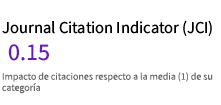The Motif of the Police Still Life
DOI:
https://doi.org/10.24310/BoLArte.2020.v41i.8144Keywords:
Iconography, Still Life, Police Still Life, Iconology, PowerAbstract
This article analyzes a form of iconographic transmission that originates from artistic sources of the past, the Mannerist and Baroque still lifes, which is readjusted and reformulated by the security forces to convey a communicative message of significant impact: the confiscated objects in a police raid are presented in an art form we call «police still life», that immediately incites the sense of guilt. This systematic practice of various Spanish police forces presents a method of using an iconographic motif as a communicative form of state power. This article summarizes some of the results of the research project MOVEP (The visual motifs in the public sphere. Production and circulation of images of power in Spain, 2011-2017), CSO2017-88876-P, whose main objective is to analyze the recurrence, production, and circulation of specific motifs related to the representation of power in images appearing in the press, digital media, cinema and television.
Downloads
Metrics
References
APHESBERO, Michelle y COLOMINE, Danielle (2003), «Evidence: natures mortes de la police, police still lives, bodegones policiales», en 4 Taxis, Special Issue, n.º 21, 22, 23, 24.
ANDRÉ, Emmanuelle (2007), Esthétique du motif: cinéma, musique, peinture, Presses Universitaires de Vincennes, Saint-Denis.
BALLÓ, Jordi y BERGALA, Alain (eds.) (2016), Los motivos visuales del cine, Galaxia Gutenberg, Barcelona.
BAUDRILLARD, Jean (1969), El sistema de los objetos, Siglo XXI, México.
BENJAMIN, Walter (1990), El origen del drama barroco alemán, Taurus, Madrid.
BERGER, John (2016), Modos de ver, Gustavo Gili, Barcelona.
BREDEKAMP, Horst (2007), «Las estrategias visuales de Thomas Hobbes» en SPRINGBORG, Patricia (ed.), The Cambridge companion to Hobbe’s Leviathan, Cambridge University Press, Cambridge, pp. 29-60.
BRYSON, Norman (2005), Volver a mirar. Cuatro ensayos sobre pinturas de naturalezas muertas, Alianza Editorial, Madrid.
BURKE, Peter (2005), Visto y no visto: el uso de la imagen como documento histórico, Editorial Crítica, Barcelona.
CALVO SERRALLER, Francisco (1999), El bodegón español. De Zurbarán a Picasso, Museo de Bellas Artes, Bilbao.
CALABRESE, Omar (1999), La era neobarroca, Ediciones Cátedra, Madrid.
CHERRY, Peter (1999), Arte y naturaleza: el bodego?n espan?ol en el siglo de oro, Doce Calles, Aranjuez.
DE LA FLOR, Fernando R. (2009), Imago. La cultura visual y figurativa del Barroco, Abada Editores, Madrid.
DELEUZE, Gilles (1990), «Post-scriptum sur les sociétés de contrôle», Pourparlers 1972-1990, Les éditions de Minuit, París.
DIDI-HUBERMAN, Georges (2007), L’image ouverte: motifs de l’incarnation dans les arts visuels, Gallimard, París.
— (2009), La imagen superviviente. Historia del arte y tiempo de los fantasmas según Aby Warburg, Abada Editores, Madrid.
FOUCAULT, Michael (2012/1980), Vigilar y castigar: Nacimiento de la prisión, Siglo XXI, México.
GINZBURG, Carlo (2013), Peur révérence terreur. Quatre essais d’iconographie politique, Les Presses du réel, Dijon.
GUEVARA, Felipe de (1788), Comentarios de la pintura, Don Gerónimo Ortega, Hijos de Ibarra y compañía, Madrid.
JORDAN, William (1985), Spanish still life in the golden age, 1600-1650, Kimbell Art Museum, Fort Worth.
LE BRETON, David (2003), Anthropologie du corps et modernité, PUF, París.
LOMBROSO, Gina (2006), Criminal Man, Combined Academic Publication, Londres.
MONEGAL, Antonio, RIDAO, José María y TORRES, Francesc (2004), En Guerra, Catálogo CCCB, Barcelona.
PACHECO, Francisco (1990), Arte de la pintura. Su antigüedad y grandezas, Cátedra, Madrid.
PANOFSKY, Erwin (1972), Estudios sobre iconología, Alianza Editorial, Madrid.
— (1964), Tomb Sculpture, four lectures on its changing aspects from ancient Egypt to Bernini, H. N. Abrams, Nueva York.
PÉREZ SÁNCHEZ, Alfonso (1983), Pintura espan?ola de bodegones y floreros de 1600 a Goya, Ministerio de Cultura, Madrid.
RAY, Man (1922), Les champs délicieux. Album de photographies, París.
SCHNEIDER, Norbert (2003), Naturaleza muerta. Apariencia real y sentido alego?rico de las cosas. La naturaleza muerta en la edad moderna temprana, Taschen, Colonia.
STERLING, Charles (1959), La nature morte de l’antiquite? a nos jours, E?ditions Pierre Tisne?, París.
STEYERL, Hito (2018), Los condenados de la pantalla, Cajanegra Editora, Buenos Aires.
SONTAG, Susan (2008), Sobre la fotografía, Random House Mondadori, Barcelona.
TAGG, John (1988), The Burden of Representation. Essays on Photography and Histories, University of Minnesota Press, Hong Kong.
VON SCHLOSSER, Julius (1988), Las cámaras artísticas y maravillosas del renacimiento tardío, Akal, Madrid.
WALKER, Michael (2005), Hitchcock’s motifs, Amsterdam University Press, Amsterdam.
WIND, Edgar y GOMBRICH, Ernst (2019), Curiosa laboriosidad. Dos conferencias sobre Aby Warburg, Catálogo Libros, Santiago de Chile.
Downloads
Published
How to Cite
Issue
Section
License
Todos los contenidos publicados en la revista Boletín de Arte están sujetos a la licencia Creative Commons Reconocimento-NoComercia-Compartirigual 4.0 cuyo texto completo puede consultar en <http://creativecommons.org/licenses/by-nc-sa/4.0>

Los/as autores/as cuyas contribuciones sean aceptadas para su publicación en esta revista conservarán el derecho no exclusivo de utilizar sus contribuciones con fines académicos, de investigación y educativos, incluyendo el auto-archivo o depósito en repositorios de acceso abierto de cualquier tipo.
La edición electrónica de esta revista esta editada por la Editorial de la Universidad de Málaga (UmaEditorial), siendo necesario citar la procedencia en cualquier reproducción parcial o total.











4.png)
